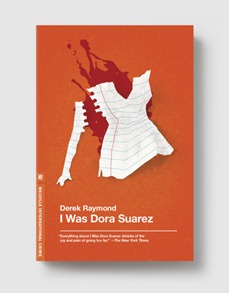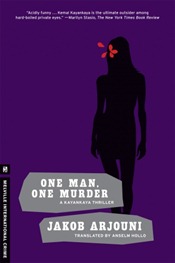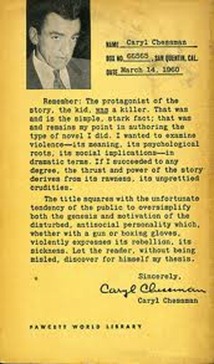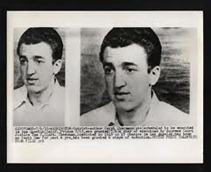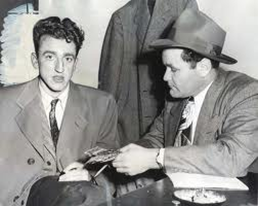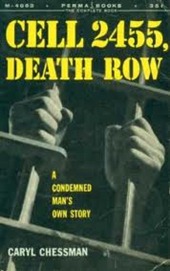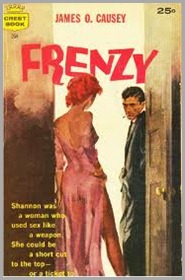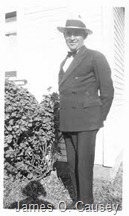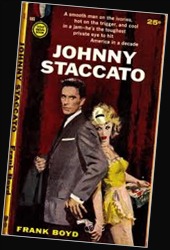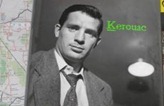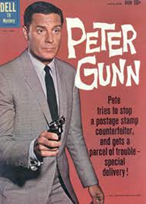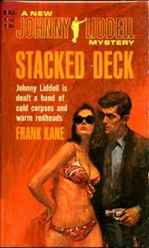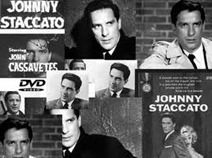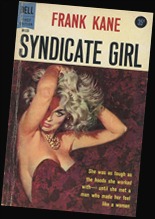No discussion of On the Waterfront, the novel, can be undertaken without at least mention of the movie. The book was highly praised when it was released in 1955, a year after the film received eight Academy Awards, including Best Picture, Best Actor and Best Director. On its own, the novels was a best seller.
Originally, the book was titled just Waterfront, it was no simple novelization of the film, “that bastard word for a bastard byproduct of Hollywood success”, as Budd Schulberg states in his Introduction in the 1987 edition. The book was compared to the works of Émile Zola and Theodore Dreiser by the critics because of its use of the ‘naturalist style’. The naturalist school featured detailed realism, that in this case, suggested that social conditions, heredity, and environment had inescapable force in shaping the characters that populate the book. The critics, after all the awards, praise and kudos the film received, were surprised that there was still so much to say than a 90 minute movie could suggest.
Originally inspired by a 24-part series of articles in the New York Sun by Malcolm Johnson, titled “Crime on the Waterfront,” Budd Schulberg wrote a long piece for The Saturday Evening Post, titled “Father John Knows The Score”. Schulberg took an unorthodox approach to writing the screenplay by not spending a month or two, but literally years absorbing the unique atmosphere of the New York Waterfront. He hung out at the westside Manhattan and Jersey bars that were the unofficial headquarters of the waterfront racketeers and Irish and Italian “insoigents”. He spent nights drinking beer with longshore families in their $26.50 a month railroad flats. Along the way he interviewed longshore-union leaders and the outspoken labor priests from St. Xavier’s in New York’s Hell’s Kitchen, one of which the book is dedicated to; Father John Corridan described as “a rangy, ruddy, fast-talking, chain-smoking, tough-minded, sometimes profane Kerryman”. A welcome antidote to the stereotypical Barry Fitzgerald, Bing Crosby “Fah-ther” that Hollywood was so fond of. Father Corridan’s speech was a unique blend of Hell’s Kitchen and baseball slang and he expressed an encyclopedic knowledge of waterfront economics and man’s inhumanity to man. This maverick priest was the Father John of Schulberg’s article for The Saturday Evening Post. Schulberg was surprised to find that just a few blocks west of comfortable watering holes like Sardi’s there was this entire world that the rest of Manhattan didn’t know existed.
Schulberg’s ‘escort’ or protector and his cover was one of Father John’s most staunch adherents, Little Arthur Browne, Brownie as he was known. Brownie was one of the standup “insoigents” in the Chelsea local run by the fat cats and their “pistoleros.” Brownie was probably the model for Runty Nolan of the book and Kayo Duggan of the film. Browne had been beaten up, had his nose flattened by “the cowboys” – the local union enforcers – been thrown through a skylight and even tossed in the river unconscious, all things that Runty endures in the book. Schulberg got most of the local dialect that he would write into the screenplay as well as the novel during Runty and his forays into the local bars which were, in places, ten to a block.
Schulberg had discussed with director Elia Kazan his research into the waterfront, and Kazan urged him to write a screenplay, which was thrown back in Schulberg and Kazan’s faces by one of Hollywood’s leading moguls. So, he set out after this to write a novel when some smarter Hollywood mogul accepted the screenplay. The film was made, after a few changes to the script, and the rest, as the saying goes, is history. The film was an astounding success. Filmed over 36 days on location in various places in Hoboken, New Jersey, including the docks, workers’ slum dwellings, bars, littered alleys and rooftops. Furthermore, some of the labor bosses goons in the film – Abe Simon as Barney, Tony Galento as Truck and Tami Mauriello as Tullio – were actual former professional heavyweight boxers. Terry Malloy’s (Brando’s) fight against corruption was in part modeled after whistle-blowing longshoreman Anthony DiVincenzo, who testified before a real-life Waterfront Commission on the facts of life on the Hoboken Docks and had suffered a degree of ostracism for his deed.
The historical context of the film and the book are rooted in the International Longshoremen’s Association (ILA) which was established from the ashes of 19th century labor unions that organized dockworkers. In 1895, the ILA grew to adopt the Chicago (Great Lakes) Longshoremen’s Union ideals as a model and encompassed all of the U.S. and many Canadian longshoremen. By the turn of the 20th Century they became affiliated with the American Federation of Labor (AFL). By 1916, the ILA had become based in The Port of New York, which took in all of the harbor shore, including New Jersey. In 1918 Joseph Ryan became the president of the ILA’s “Atlantic Coast District.” Joseph Ryan was elected International president in 1927 and it is him that the character of “Weeping” Willie Givens is based. Under Ryan’s leadership, the ILA had become corrupt and was affiliated with Mafia characters such as Albert Anastasia and the Irish gangs. By the late 1920s, Anastasia had become a top leader of the ILA, controlling six union local chapters in Brooklyn. The character of Tom McGovern in the film and movie were modeled on the mobster Anastasia and the like, and Anastasia’s Murder Inc. also figures promptly in both. Under the mobsters were the local union bosses; the Johnny Friendly of the story.
These corrupt men ruled “the greatest harbor of the greatest city of the greatest country in the world” and they ran it like their own private grab-bag. After the largely successful 83-day 1934 West Coast longshore strike, Pacific coast longshoremen, who had rebelled against Ryan’s leadership, first organizing the membership to reject the contract that Ryan had negotiated, then leading the strike over his objections, voted to secede from the ILA and join the Congress of Industrial Organizations as the International Longshore and Warehouse Union. Soon longshore locals in Baltimore (the 6th busiest port in the world) , The Great Lakes, New Orleans and everywhere else except the Port Of New York Harbor, had bolted.
Longshoremen obtained work through a ‘shapeup’ in which bosses chose a workforce on a daily basis. Longshoremen often worked only a day or less per week as a consequence. Work was especially uncertain for those who unloaded trucks and ships and had to appeal to gangsters who controlled this work for employment. The ‘shapeup’ figures prominently in the story, as it lays out how the gangsters and local bosses controlled the work force. They got to pick and choose who worked to put bread on the table and who didn’t. Complain about anything ; safety – and longshore work was the most dangerous in the country and suffered more casualties than miners – pay, theft, literally anything and you did not get a work assignment. You kept your mouth shut and went along if you wanted to eat.
This also tended to tie the longshoremen to their neighborhood. If they moved, they wouldn’t get work anywhere else because they were ‘outsiders’. And naturally, the bosses made sure the workers didn’t earn enough to even consider moving. And when they’d be short on money, there were the loan sharks, who were also the same bosses, to lend you enough to feed your family at 10% interest per week. If you got behind they’d make sure you got your tag to work for a few days and have your pay-packet sent straight to the guy who hired you to pay your debt. The gangster went even further by owning or controlling (by providing protection) the local businesses. Then there was the ‘short gang’. If a crew of 22 was required to unload a ship and turn it around, the bosses would ‘short gang’ the load. They’d only send 16 or 18 men to do the work, then charge the shipping company for the full 22, pocketing the wages from the ‘ghost’ 6 or 8 longshoremen. The gangsters even controlled the bars in the neighborhoods surrounded by the railroad flats (so called because the rooms were strung together back to back, like the cars of a train. You might enter a flat through the kitchen and to get to any other room in the apartment, you walked through one room to another).
The 1950s was a decade of turmoil and trauma for the ILA. Several sensationalist articles, like those published by Schulberg and Malcolm Johnson, were printed in New York City newspapers and focused on “alleged” rampant gangsterism on the City’s waterfront. In 1953 Governor Thomas E. Dewey ordered his New York State Crime Commission to conduct a full investigation of the ILA. They in turn formed The Waterfront Commission of the New York Harbor which put a lot of pressure on Ryan and his gangster associates and eventually led to his resignation after the ILA was suspended by the AFL. It is during this period that the story – both the movie and the book – take place.
Set in the fictional port of Bohegan, NJ the story opens centered on Terry Malloy, a retired prize fighter who just goes along and has no real ambition other than to earn a few bucks to keep himself in beer and dames. Terry Malloy is a half-vicious hoodlum caught between the waterfront mob and a groping, anxious awakening of his conscience. But Terry’s inability to look into himself or to experience anything but the immediate pleasure or pain of life on the waterfront are nothing but sloth. Terry’s brother is Charley Malloy, the dockside lawyer and right hand man of Johnny Friendly, the local pier boss who exercises iron-fisted control of the waterfront. Terry is used to coax a popular dockworker, Joey Doyle, out to an ambush preventing him from testifying against Friendly before the Crime Commission. Terry thinks that Friendly’s “pistorleros” – the men he keeps around him who are “on the muscle” – picked for three qualities or rather two of three qualities; they have to be rough or brainy AND loyal – are just going to put a scare in to Doyle, maybe work him over a little, but they throw Doyle off the roof. Terry resents being used as a tool in Joey’s death but is still willing to play “D and D” – deaf and dumb. Terry meets and is smitten by the murdered Joey Doyle’s sister, Edie (Katie in the book) who has shamed “waterfront priest” Father Barry into fomenting action against the mob-controlled union. Father Berry convinces Runty Nolan (in the book, Kayo Duggan in the film) to testify after Father Barry’s promise of unwavering support. Duggan is killed when Friendly get’s word of Runty’s agreement and his body thrown in the river. See the scene above with Karl Malden giving the speech when Runty/Kayo is pulled from the river. As Father Barry says, “In his mind the river and Johnny Friendly were one, endlessly dangerous and never sleeping.” Silent partners as it were.
Terry, tormented by his awakening conscience, increasingly leans toward testifying, Friendly decides that Terry must be killed unless Charley can coerce him into keeping quiet. Charley tries bribing Terry with a good job, and finally threatens him by holding a gun up against him, but recognizes he has failed to sway Terry, who places the blame for his own downward spiral on his well-off brother. In one of the most famous scenes in film history, Terry reminds Charley that if it had not been for the fixed fight, he “could’a been a contender”.
Charley gives Terry a gun and advises him to run. Friendly has been spying on the situation, so he has Charley murdered, his body hanged in an alley as bait to get at Terry. Terry sets out to shoot Friendly, but Father Barry obstructs that course of action and finally convinces Terry to fight Friendly by testifying.
The novel bares many differences from the film. Mainly, the film is centered on Terry Malloy, Marlon Brando’s character and is told almost entirely from Terry’s point of view. The novel, on the other hand, is narrated by Father Barry, and though Terry Malloy is a main character, he is but one of many. Schulberg stated the reason for this being the two “art forms” are very different. “Film is an art of high points. It should embrace five or six sequences, each upping the tension and mounting to a climax. In film,” he states, “there is no room for multiple points of view, for ‘digressions’ into complicated, contradictory character traits or an exploration of social background.” In short, the film must “act” and employ action where the novel can meander into things like background, motivation and historical context. The film, in Schulberg’s view, must go from significant episode to more significant episode. So, the film makes no effort to explain the social background. It simply ‘shows’ the mob controlled docks, simply mentions the Water Front Crime Commission and gives no background of why it existed in the first place.
The novel does all of these things, and Father Barry in the novel art form, is the ideal narrator. Terry Malloy becomes, in the novel, just a single strand in the rope, a major strand among the characters to be sure, but not the central strand. The novel allows Schulberg to work ‘veins’ of the story, the social conditions, Father Barry’s inner dialog with himself as he wrestles with his conscience, that the film could not. It allows the struggle of Father Barry’ as he weighs obedience to the church and his social responsibility to his flock just as St Francis Xavier of Goa had to weigh his conscience against his Portuguese masters and martyring himself for the Hindu Pearl Divers being exploited by the European colonizers.
As good as the film is, which hardly need’s my support at this stage in life, the book is a more educational and deeper look into a place in time. It fleshes out the story in a way the film didn’t even try to, and makes for a great read with a basis in history. Although Schulberg as a novelist, is no Émile Zola or Theodore Dreiser and Schulberg claimed no membership in that great company, the novel is written in that tradition and deserves its place in the literary canon.
On the Waterfront is a powerful retelling of an iconic American story that stands apart from the great film as an unforgettable vision of crime, politics, and class in the twentieth century. This eBook from Open Road Media features an illustrated biography of Budd Schulberg including rare images and never-before-seen documents from the author’s estate.
|
Article first published as Book Review: On The Waterfront: A Novel by Budd Schulberg on Blogcritics.
Copyright © 2012 Robert Carraher All Rights Reserved

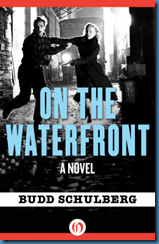

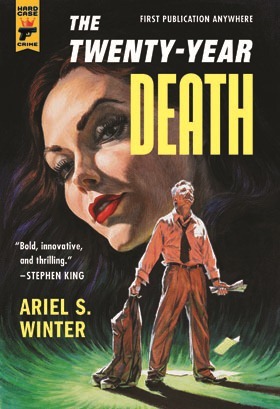 The Twenty-Year Death (Hard Case Crime)
The Twenty-Year Death (Hard Case Crime)





 Library Of America
Library Of America
